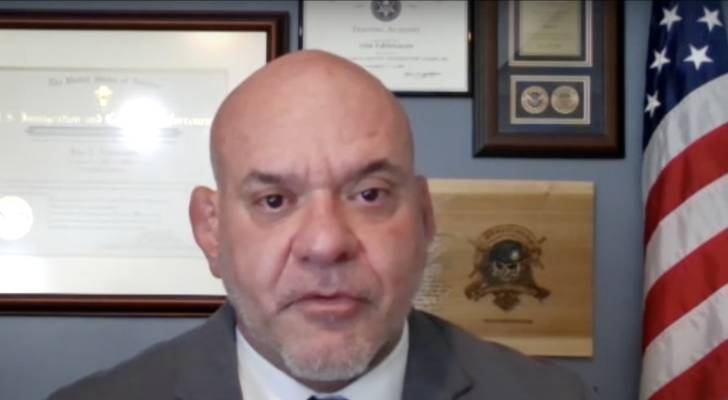‘It’s just ugly’: Honolulu residents fed up with ‘monster home’ that’s been standing ‘derelict’ for 3 years — here’s what the city’s doing to crack down on these blights


Nestled in the Honolulu neighborhood of Kaimuki, a partially constructed building at 3615 Sierra Drive has become a focal point of contention. One of Hawaii’s so-called “monster homes” — unusually large residences, sometimes occupied by dozens of people — the structure has stood incomplete for three years, drawing criticism from residents and scrutiny from city […]
San Jose man has $12 million to his name while his fiancee has only $50,000 — he wants a prenup, but she has concerns. How The Ramsey Show hosts suggest he navigates this ’emotional’ process


When Derek, 36, called into The Ramsey Show, he wasn’t just looking for financial advice, but for peace of mind as well. Recently engaged and preparing to blend a family of five children, all aged between 10 to 12, Derek also brings something else into the marriage: $12 million in assets. Don’t miss I’m 49 […]
‘What can we do?’: Nearly 300 workers blindsided after Illinois plant abruptly closes — after serving as a local linchpin for 60 years. What it says about the current state of US unemployment
When the Momence Packing Company, in Illinois abruptly shut its doors on June 2, 274 people found themselves jobless. It was a gut punch to a tight-knit community that has worked at the facility — a pillar of local employment for over six decades, originally built in 1962 and run by Johnsonville Foods as a […]
I’m 36, with 2 kids, and in the middle of a divorce. I’m moving home to my parents’ for a bit to save money — and I want to invest at least $3.5K/month for my future. Where do I start?
As a 30-something, rebuilding your life post-divorce can feel daunting, especially if there are a couple of kids involved. However, if you’ve moved back in with your parents and you’re starting with no debt and a steady monthly savings goal of $3,500, you’re in an incredibly strong position. Don’t miss I’m 49 years old and […]
I’m 31, make $117K/year, cover all household bills — yet my fiance refuses to chip in. Insists his cash is for ‘fun’ while I handle ‘responsibilities.’ Can I fix this before we get hitched?


For some, the road to marriage can look financially lopsided. Those in their 30s earning their fair share — say, more than $100,000 a year — may be used to covering 100% of their individual household expenses. However, it doesn’t typically feel good when a fiance refuses to contribute, claiming their money is only for […]
‘He stole all the money’: How a West Virginia woman lost $8M, started over with $531K and a plan — here are the steps Ramsey Show experts offered her to help her rebuild


After receiving an $8 million settlement following her husband’s fatal workplace accident in 2008, Mikeal, a 53-year-old widow from Charleston, West Virginia, entrusted the money to a close friend who worked at a bank. Two years ago, she discovered it was gone. Don’t miss I’m 49 years old and have nothing saved for retirement — […]
San Jose man flabbergasts Dave Ramsey when he admits he’s ‘secretly worth millions of dollars’ — and he’s kept his ‘spender’ wife of 5 years in the dark about their true financial situation


When Damon from San Jose called into The Ramsey Show, he didn’t ask how to get out of debt — he asked whether he should tell his wife they’re secretly worth millions. His question of whether he should ever disclose his secret to his wife caught listeners — and hosts Dave Ramsey and Ken Coleman […]
I’m 31, make $117K/year, cover all household bills — yet my fiance refuses to chip in. Insists his cash is for ‘fun’ while I handle ‘responsibilities.’ Can I fix this before we get hitched?


For some, the road to marriage can look financially lopsided. Those in their 30s earning their fair share — say, more than $100,000 a year — may be used to covering 100% of their individual household expenses. However, it doesn’t typically feel good when a fiance refuses to contribute, claiming their money is only for […]
‘Cannot do business in the state of California’: Gas could spike to $8 per gallon as two major refineries shut down — and that’s not all. Are the state’s strong regulations worth the cost?


Two large California oil refineries are shutting down, triggering mounting concerns from state legislators, industry groups and many others. Assemblymember Mike A. Gipson of the Gardena district bluntly described his concern during a recent Sacramento hearing. “This is a tremendous loss,” Gipson told NBC Los Angeles, referring to the looming closure of the Phillips 66 plant […]
Colorado businesses facing $8 million in fines for employment law violations, including hiring unauthorized migrant workers — but here’s why undocumented workers are paying the highest price


Three Denver-area businesses face a combined $8 million in fines for allegedly employing unauthorized migrant workers in contravention of employment law. U.S. Immigration and Customs Enforcement (ICE) special agent Steve Cagen told Fox31 News that the fines are designed to uphold the law and “promote a culture of compliance." Don’t miss I’m 49 years old […]